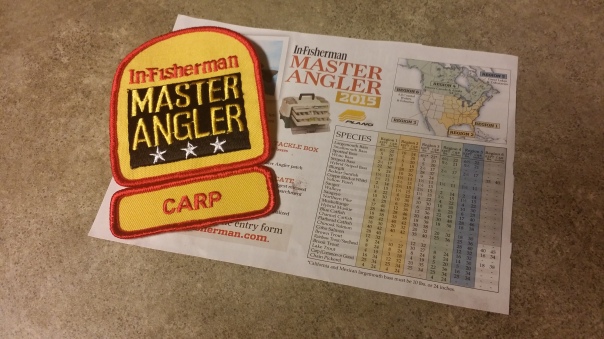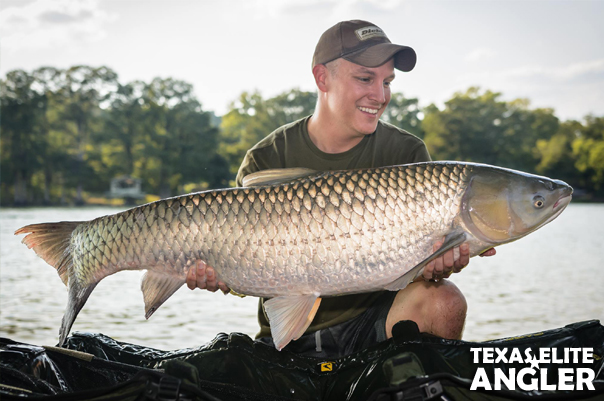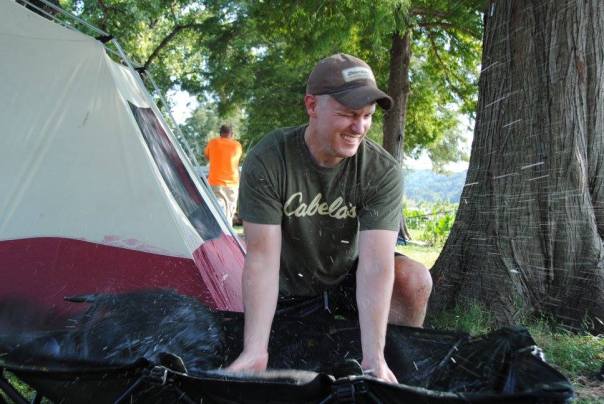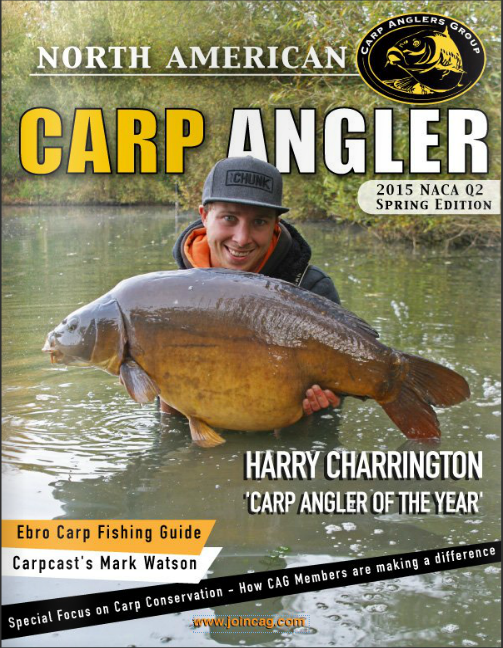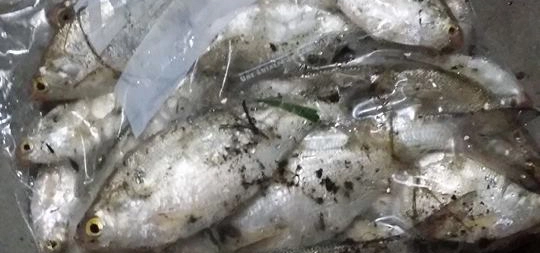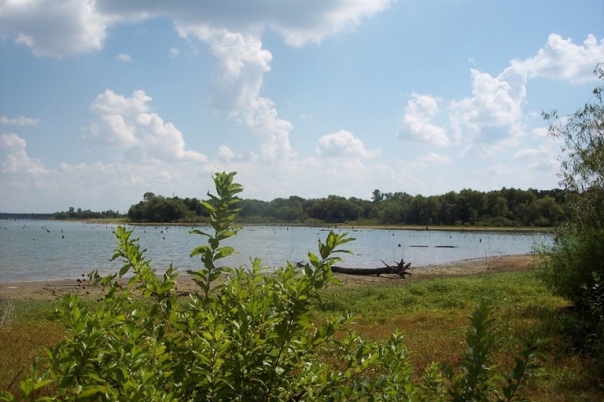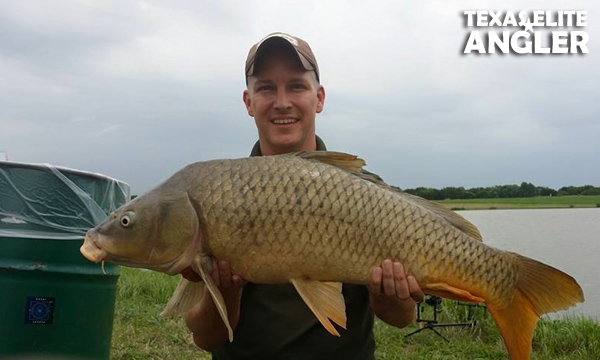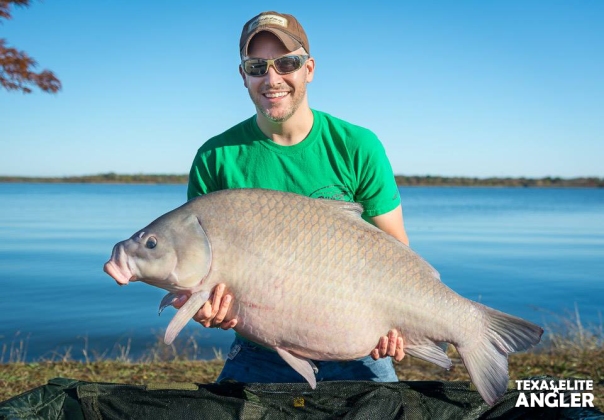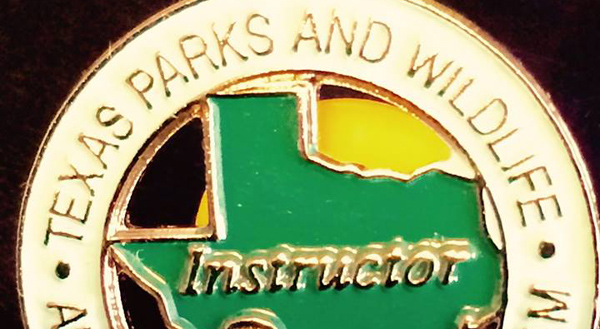Blog Archives
Session Lesson :: Fishing Intelligence
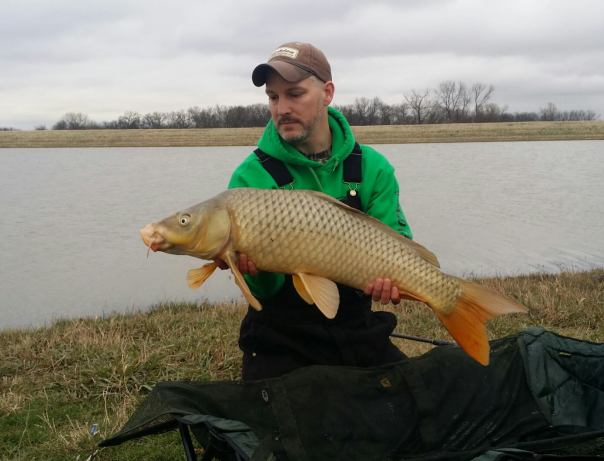
16lbs 6oz colder water common – Denton, TX
Each time I go out fishing I try to learn something new — some take away that will make me a better angler. I was fishing a social fish-in today with a handful of hardcore carp hunters who chose to brave the freezing weather with me and even though it was purely social that old spirit of competition is always just under the surface. I had fished the venue many times before and knew my sweet spot so that’s were I setup confident I would put fish on the bank and I did just that. Ultimately however, I didn’t win the day with the biggest total weight caught. I knew there was a lesson here if I looked hard enough.
One angler — the guy who caught the greatest weight of fish — did something that I completely passed over. He paid attention to what I’ll call “Fishing Intelligence”. Generals overlooking a battle plan need intelligence to make decisions. If a General has good intel he can plan the fight to win a decisive victory. A General who ignores intelligence or doesn’t have intelligence is doomed to be defeated.
This one angler did one very important thing to gather his Fishing Intelligence and this is the nugget you want to remember. He talked to the local fisherman. The local fisherman knew this pond like the back of his hand because he fishes, literally, every day. He knew where the fish were most likely to be caught that “day”…not, like me, who was basing my decision off intelligence months old. So yes, just like the fish you eat, your Fishing Intelligence must be “fresh“.
Lesson learned.
InFisherman Master Angler 2015
Fellow anglers, it’s not to late to earn your Master Angler patch from InFisherman. Master Angler is an annual big fish contest by InFisherman Magazine and its easy to participate. You have to be a subscriber to the magazine (why wouldn’t you — its a fantastic publication) and you have to catch a trophy fish from any of 27 species. Species and size requirements are set by Region, and there are some additional rules so read the details carefully. Contest ends December 31st so get out there and wet a line.
The Master Angler program promotes selective harvest which protects our fisheries. The idea is that you harvest fish to eat but do so wisely. Large specimen should be released to sustain good fishing. Only plentiful and small fish should be kept. I’ve always said, “You can’t catch her again if she’s on your dinner table.”
WARNING: P-line CXX not very abrasion resistant
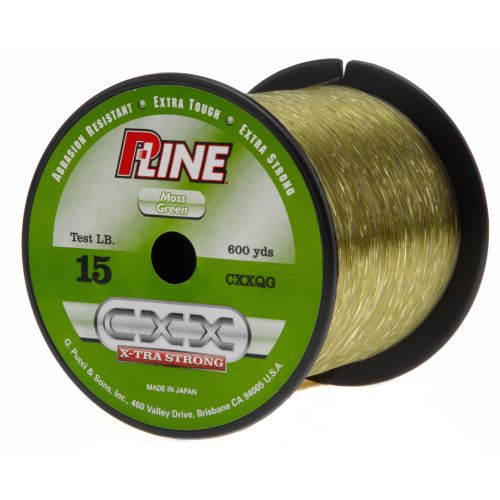
Warning to my friends and fellow anglers regarding P-lines CXX X-Strong line. CXX is a co-polymer line that is more dense than water and sinks — the main reason I purchased it. I spooled up a new reel with 15lb P-line CXX and fished it over a few sessions. I noticed a few weeks after re-spooling that the line had a small frayed spot about 36-inches up from the hook link. I could see the fibers rolling back and away from the main line. I cut this piece out and inspected the line another few feet. I chalked it up to normal wear and tear for someone who fishes as much as I do. I had no trouble the remainder of the session.
Last weekend I was fishing a new lake rumored to hold some lumps. I had a screaming run and loaded the rod to what felt like a new Personal Best. It’s hard to tell and I never got a look at it, but it felt good. I could feel this beast had its head down and it was turning slowly. About halfway in, without warning, SNAP! the line literally shot back over my shoulder. It snapped somewhere above the swivel and lead. After a very unflattering temper tantrum I composed myself and reflected.
I felt nothing, no vibration, on the line as though I had been drug over some submerged timber or rocks. I’m very conscious of the drag and fish it light — a necessity for carp angling. To be fair, I suppose it’s possible I hit something that cut the line immediately, or I missed a spot of wear on the line and it just gave up, but I haven’t had this problem with other lines.
After reflecting and going over the brief fight in my head, the line simply gave up on me and I lost a good fish. When I got home I stripped the line off the spool and slam dunked it in the trash can.
Morale of the Story – use a quality line like 20lb Korda Subline. Lines like P-line and Berkley Big Game are prone to breaking and should be avoided.
New Personal Best – 40lb Grass Carp
Photo Credit: Kevin Olivier – Summit Design
It’s funny how an innocent social fishing event can turn into an epic moment in time. That’s exactly what happened last weekend at Lake Austin. I was attending a Carp Angler’s Group (CAG) social fishing event in Austin, TX with a bunch of my fishing buddies when my hookbait intersected with destiny. It had been a rough start getting to the park late, squeezing in to a tight fishing spot and trying to establish my swim. My goal was to catch Common Carp, but I couldn’t be happier with my results.
After 23 hours of fishing and probably less than 2 hours of sleep (I fished through the night because, hey, its Austin) I finally hit the hulking fish lottery with this 40lb chunk. I had just landed a 25lb grass carp whilst nearly breaking my toe on a large rock under the water. I was limping back to my pod after casting out and was setting the rod down in the alarm when my reel started peeling line like I had snagged a jet ski. I stood there confused for a split second before my instincts kicked in and I loaded the rod. To be perfectly honest, it didn’t feel like much of a fish. Even when I could see it down in the water, it looked small, but water depth and clarity can be deceiving. When the net man raised this beast up it quadrupled in size.
It was freaking huge and angry. This big boy beat me up on the mat splashing water in my face and covering me in a coat of slime. I knew getting him to sit still for a Kodak moment was going to be a bear.
Photographer extraordinaire, Kevin Olivier, managed a fantastic shot despite my quaking arms and rowdy fish. After the fish was safely back in the water I took a victory lap around the park just soaking it in.
My hats off to Chad Woolard, Texas State Chair of CAG and member of the Austin Carp Anglers (ACA), who made this event possible. I had a awesome time and made a memory.
If you’re interested in carp fishing, or catching a fish of a lifetime (and who isn’t) then I would encourage you to check out CAG and the ACA (See links at right). Even though carp have gotten a bad rap, they truly are a great sport fish. They get bigger and pull harder than anything else in fresh water — guaranteed.
North American Carp Angler Magazine – Spring 2015
Now available, the 2015 spring edition of the North American Carp Angler Magazine
click here to read it FREE: http://issuu.com/northamericancarpangler/docs/naca_2015_spring_edition
NACA is published by the Carp Angler’s Group (CAG) – a group of anglers dedicated to catch-and-release carp fishing.
How Fresh Does Fresh Cut Shad Have To Be?
We’ve all heard and have generally accepted that fresh cut shad is better than frozen, but what constitutes fresh? How fresh is fresh? I’ve spent some time pondering this question because, like you, I want to be successful in landing big catfish and I certainly don’t want to stunt my chances by using bait that is less attractive to my target species.
How long are shad considered fresh?
You’ll probably get a different answer depending on who you ask, but within 24 hours of being caught is the consensus from my sources. I do believe catching them right at the spot you’re fishing and putting them right on the hook is obviously a better option, but sometimes that’s just not possible. Anything over 24 hours starts to drift into the “not-so-fresh” category.
What can you do to keep shad fresh?
It’s important to put the shad on ice quickly after you’ve caught them, unless you’re planning to fish live shad. This can be a challenge in itself because shad die pretty quickly in a bait bucket or cooler. In a square container they’ll nose in to a corner and suffocate themselves. In a bait buck there is simply not enough oxygen in the water to keep them alive. A good aerator and a larger cooler would be necessary if you want to keep them alive. There are also shad additives that you can add to the water to improve their chances of survival.
Should I Even Try Frozen Shad?
In the dead of winter, when shad are hard to get, it may be your best bet. If you ever have the option though, fresh shad is best — hands down.
Slip Sinker vs Santee Rig for Big Blue Catfish
You’re familiar with the rigs, the Slip Sinker holds the bottom and the Santee adds a float to raise the bait off the bottom. When fishing for blue catfish, particularly the big’guns, which rig is more likely to hook up? Allow me to answer that question with a story.
I was fishing Lake Lewisville today and as I was enjoying an absolutely mild, first-of-fall day this older gentleman who had been casting for bass starts picking his way down the bank toward me. I always love the opportunity to talk fishing with someone so I got up and greeted him as he got near enough to exchange pleasantries. Turns out he lives in the neighborhood up the road and fishes the area each morning. As usual he starts checking out my setup. I use banksticks and bite alarms (euro-fishing gear) and it always draws a few interested anglers.
After a quick demonstration of my gizmos, he asked what rig I use for catfish. Of course I answer with the question, which kind? It’s important to distinguish between the three common species (channel, blue, flathead) because while they’re all catfish, you target them in different ways. I saw the sparkle in his eye when he said, “The big blues.”
While the Slip Sinker rig is a killer rig for catfish, and I’m sure it’s caught its fair share of blue catfish, the Slip Sinker really lends itself better to catching Channel Cat. The reason being, Channel Cats simple don’t get as big as Blue Catfish, maxing out at about 30 lbs. So why does that matter? In the case of rig selection when targeting “Big” Blue Catfish, size does matter.
The bigger the catfish is, the more difficult it is for it to pick up food items that are laying flat on the bottom. 30+ pound Blue Catfish will prefer a bait that is suspended off the bottom because it can more easily get it into his mouth. This is where the Santee Rig shines. By adding the float and suspending your bait off the bottom you raise the chance of a good hook up with a trophy blue. Don’t worry, those smaller catfish don’t mind suspending to eat your bait.
One last thing to be sure of is to match your float size to your bait offering. A big chunk of shad will need a good 3″ float to pop it up. It’s a good idea to drop your rig shallow and test to see if your float can suspend your bait before casting out. If your selected float doesn’t have the muscle, switch it out for a bigger float. Catfish aren’t float shy, so don’t worry about a big’ole orange float close your the bait.
Texas Fishing Licenses Expire Tomorrow
Texas anglers, don’t get caught without your fishing license. Fishing licenses expire tomorrow so be sure to re-up for another year of fishing and know that you’re contributing to the conservation of our state’s fisheries.
CLICKY> http://www.tpwd.state.tx.us/business/licenses/online_sales/
Session Lesson :: Do Boilies Produce Bigger Fish Than Maize?
As I was banking it this weekend I had my feet up on the cooler, sipping a diet coke and wondering if one type of bait produces larger fish than another, namely Maize or Boilies. I’m mostly confident with maize. I believe maize holds a scent better than boilies and I like how it blends in with my packbait. Anglers will have two trains of thought here. Some, like me, would like to mask their hookbait so it looks like the surrounding food items to trick a wary carp into taking it. Others would argue that your hookbait should stand out so the carp can more easily zero in on it and be intrigued enough to pick it up. I’ve seen enough underwater carp videos to make me believe masking your hookbait is the better choice. Ive seen the carp stare down a bright pop-up and steadily eat everything else. I encourage you to experiment and see what works best for you, but I digress…
We’ve all heard the fisherman’s strategy of sizing your baits to your fish. If you want to catch a big bass, throw a big lure. Want to catch a big blue cat, present a big hunk of fresh cut shad on a wide gape hook (8/0). Shouldn’t the same hold true for carp and buffalo fishing? It would seem the answer would be yes, but lets remember that a carp and buffalo have a sucker type mouth and doesn’t hinge open to accept large baits so they may be the exception to the rule.
Remember this guy…54lbs of majestic buffalo caught on two kernels of fruity flavored maize.
To answer the question of which produces bigger fish, maize or boilies, I decided to fish one rod maize and one rod boilies for the remainder of the session. Rod 1 had three kernels of tutti frutti maize, Rod 2 had one 16mm tutti frutti boilie. I have smaller 10mm and 12mm boilies, but for the sake of the experiment I wanted to use a bigger bait to see if it snagged a bigger fish.
I caught 5 fish (I don’t count non-target species) during the session ranging from 6lbs to 20lbs. Below are the results:
ROD 1
- 6lbs Common Carp
- 8lbs Common Carp
- 11lbs Common Carp
ROD 2
- 18lbs Common Carp
- 20lbs Common Carp (Pictured above)
- 3 lbs Bullhead Catfish
This is hardly enough data to make any significant claims, but the session did open my eyes a bit. My two biggest fish both came on the boilie, while the smaller fish came on the maize. Was it luck? Did the maize just happen to get picked up by the smaller fish first? Did the bigger fish muscle in and take the choicest, biggest baits? It certainly bares more investigation which is the fun part!
I’d love to hear your thoughts. What’s your experience? What’s your confidence bait?
Become a TPWD certified Angler Education Instructor
This free workshop is open to anyone 18 or older interested in teaching fishing skills in their communities. The program provides the curriculum, equipment, materials and support to help volunteers successfully introduce youth and their families to fishing. Ideal for teachers, youth group leaders, afterschool or camp staff and community volunteers. SBEC credit available for teachers.
Participants should wear comfortable clothing for outdoor activities, hat and sunglasses, a sack lunch and bring a water bottle. The workshop is free, but preregistration is required, please contact Keira Quam at keira.quam@tpwd.texas.gov or (469) 644-2705.
